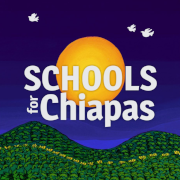Ana de Ita*
The image from which the Sembrando Vida program departs is a defeated and abandoned countryside, without any community organization, collective land tenancy, where individual campesinos have neither the necessary resources nor knowledge to produce their food, hence the program proposes to rebuild the social fabric through the formation of the Campesino Learning Communities. But the reality of rural Mexico is very different from that, the existence of the ejido and the community have maintained the people’s sense of identity with their territory, which has been the cradle of the most important social movements. In the countryside, there are countless self-managed organizational processes, community and regional life plans, committees to tend to needs, associations, collectives and campesino businesses. Currently the indigenous peoples and campesinos struggle against dispossession from their territories and are demanding autonomy.
The so-called Campesino Learning Communities (CAC), which according to its advocates, are the heart of the program, form a parallel organization to the community or ejidal assembly, which is the primary authority in the territory. Contrary to the strategy of the better-organized communities that strengthen the power of their assemblies, the CAC do not report to and are not accountable to the agrarian assemblies.
The CAC are clientelist organizations because they depend on the resources of the program. They are made up of two technicians, and 25 campesinos between whom a subordinate relationship is established. The campesinos occupy the lowest link in the vertical chain of command and their proposals are rarely heard.
The members of each CAC must propose a work plan and define a daily schedule to work on their plots and in the nurseries or bio-factories that they establish in each community. The campesinos long for the great margin of the freedom that they had without the program and some feel as if they were field hands on their own land. This has meant that, in spite of the need for resources, some decide to abandon the program.
According to the government, Sembrando Vida, is also the largest reforestation program in Latin America, given that it proposes to plant more than one million hectares of fruit and timber trees. In this way, the government is trying to counteract criticism of the environmental impacts of its mega-projects and its promotion of fossil fuels. But to achieve this, close to one billion plants are required. Their unavailability has been one of the major bottlenecks of the program. Forestry specialists warned from the beginning about the lack of production capacity. During 2019, only about 14 percent of the goal of 575 million trees were planted and survived. In addition, the government has not made a deforestation map public, much less the location of the plots to be reforested to verify that they are in fact degraded, pasture or previously planted land.
Getting the fruit and hardwood trees and having them take root is also a problem for the campesinos. The program is oriented so that one hectare is dedicated to the planting of cornfield interspersed with fruit trees, and one and a half hectares is dedicated to agroforestry systems. The first operating guidelines established that the program would provide the campesinos with in-kind support: seeds, plants, tools. But the operating rules of 2021 reduce the State’s obligation to provide them and instead pose it as a possibility. And so, various campesinos from different regions have reported that they must buy the plants in the nurseries set by the program. A cedar or a lemon tree costs 60 pesos and another 10 for transport. In addition, the planting needs watering and the labor and water access costs depend on the where the parcel is located and the type of land. If it is close to the road, they can carry water drums in a pick-up, but if it is sandy soil they must buy hoses. To cover the cost of these implements, each campesino invests a good portion of the resources from the program.
In regions in which the parceled area is very small, the planting of trees competes with food production. Some farmers would prefer to dedicate their 2.5 hectares to milpa in order to guarantee food for the family, but it is not allowed.
Several communities look for ways to turn the program around in order to avoid the conflicts caused by individualized management, while other strong and well-organized communities have prohibited participation in their statutes.
Establishing an organization with a territorial base aligned with interests of the government is in reality more complicated than in a defeated countryside.
* Director of the Center for Studies for Change in the Mexican Countryside.
This article was published in Spanish in La Jornada on March 4th, 2021. https://www.jornada.com.mx/2021/03/04/opinion/ This English interpretation has been published by Schools for Chiapas.
